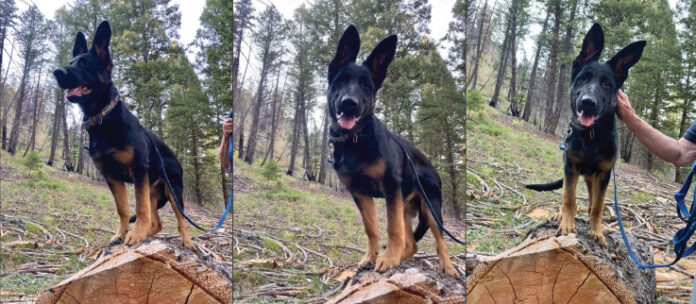
By Fran Jewell
I must share a very distressing incident that happened this week. I was working with a client in their yard with a very sweet 7-month-old puppy. Across the field came a male Akbash, limping very badly. He had a collar and name tag on, and was somewhat uncharacteristic of the breed in his friendliness with other dogs, especially considering he was badly injured. He was not just limping, but would not put any weight on his rear leg, indicating to me it was VERY painful. Many dogs in pain are not friendly at all! But, this fellow wanted to play with the puppy I was working with.
This big guy clearly had a red collar on, with a name tag attached. When my client tried to touch his collar to read the tag, he growled slightly, then cried and quickly ran out of reach.
This was very distressing—that we were unable to touch his collar to read the ID tag. Clearly, this dog needed veterinary attention immediately as it appeared he was bleeding on his foot from the distance we could get to him.
This brings me to something incredibly important in dog training that EVERYONE should do with their dog. Every dog should be collar-proofed. What does that mean? It means that every person you know should be able to touch your dog’s collar any time, any place. In an emergency such as this, many dogs, especially “power or guardian breeds,” such as Rottweiler, German shepherd, Pyrenees, Akbash, Black Russian, Giant Schnauzer as examples, are not quick to allow a stranger to touch their collars. While I mentioned power/guardian breeds here, this is true of ANY DOG that is traumatized, lost or afraid. In the dog’s eyes, his collar is very personal and can be threatening.
In a dog fight, the neck is a very vulnerable place;, so many dogs are very leery about allowing themselves to be touched there. Even the friendliest of dogs, like this guy above, can be protective of his collar/neck in a stressful situation.
How do you proof that? Start as a puppy, touch the collar, and then give the puppy a treat. It is so simple. Have friends of the family also practice this.
This is so important. You may think your dog would let anyone touch their collar; however, many times this is not the case.
Being able to touch a dog’s collar can be life saving! I could only hope that this big guy made it back to his home by himself and his owners got him the emergency care he needed.
Fran Jewell is an IAABC Certified Dog Behavior Consultant, NADOI Certified Instructor and the owner of Positive Puppy Dog Training, LLC in Sun Valley. For more information, visit positivepuppy.com or call 208-578-1565.
